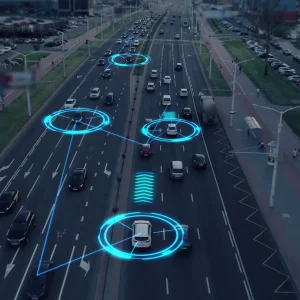Mazda’s clean Skyactiv technology is set to put the new 6 at the top of the upper medium pile. UK MD Jeremy Thompson tells Jack Carfrae why.
It’s a rare thing when a manufacturer openly states that it’s been behind the times on the fuel economy front, but Mazda has made no secret of it.
The Japanese firm has been quite honest about the fact that it’s fleet-central upper medium model, the 6, hasn’t been able to keep up with the competition in its current guise, but Mazda is heralding the new model and the introduction of its Skyactiv clean-engine technology as the seeds of change.
It’s a reasonable prediction too. The new technology is effective but it’s not as space-aged as the name suggests, because it utilises existing systems such as regenerative braking, stop/start and other such measures to create very clean engines. The best is the 150hp 2.2-litre diesel putting out segment bests of 104g/km and 72.4mpg.
Mazda UK’s managing director, Jeremy Thompson, tells BusinessCar the firm is gearing up for a massive fleet offensive with the new model: “This car gives us the opportunity to get back into the corporate sector in a very significant way and we’ve now got a significant advantage over the competition. To that end, for the next couple of months, we’re going to take the whole retail team off their current jobs and we’re going to use them to get the car in front of as many fleet customers as possible before it goes on sale in January.”
Mazda made the decision to concentrate on conventional engine technology with the 6 and the rest of its current range rather than heading down the hybrid or electric route, but it hasn’t ruled that out for later on.
Thompson explains: “The key for us is to establish the most efficient conventional solution before we move to the next level, whereas some other manufacturers have sought to overcome the inefficiencies of existing engines by adding on those solutions. We’re doing it the right way – it’s progressive and organic development.
“The next big building block in our Skyactiv programme will be the introduction of alternative fuels or electric systems, but that’s not for now. What we’ve done with this car is put all of the technology up front to give us what we know is a market-leading solution.
“There is a working relationship with Toyota on hybrid technology, so at some point we will have access to that.”
Despite the race to develop credible, mass-market alternative fuel vehicles, Thompson reckons it’s the most straightforward technology that’s likely to win over fleets in the medium term: “I think deep down, what most fleet drivers want is a car that uses conventional technology but does it efficiently in a good package – and that’s what we’ve tried to produce.”
The 6 also debuts the company’s new brake-energy regeneration system, known as i-Eloop. It differs from conventional systems because it uses a capacitor that recharges more quickly than a conventional battery and can, according to Mazda, independently run electrical systems for up to a minute with the engine switched off, so the effectiveness of the stop/start system is increased.
Thompson says the firm’s policy is to fit such technology as standard across the range, to avoid having fluctuations in the efficiency of different variants.
“By 2016, everything Mazda makes will have Skyactiv technology embedded within it. So we don’t just provide an eco badge solution where some of them are efficient and some aren’t – this is 100% across the range and progressively rolled out across all car lines. An example of that is that you’ve got the i-Eloop system on the 6, which is on all derivatives from base, and that contributes to a significant fuel economy advantage. We’ve built these technologies in rather than having them as chargeable, additional extras on the car,” Thompson concludes.
On the road with the new tech
BusinessCar got behind the wheel of some pre-production versions of the new Mazda 6. As with the CX-5 SUV, which was the first Mazda to get the new Skyactiv technology, it’s offered with two variants of the 2.2-litre diesel engine, at 150hp and 175hp. As is also the case with the CX-5, there seems to be little practical difference between the two in terms of performance: they’re both suitably potent, rendering the more frugal, lower-powered variant the default choice. The first models in the UK from January will emit 108g/km, while the cleanest 104g/km variants are set to follow by April.
Following in the footsteps of its predecessors, the 6 is the driver’s choice in this class, with sharp, engaging handling, although the ride and refinement aren’t quite as polished as those of rivals such as the Ford Mondeo and the VW Passat. It’s also a big car, with vast amounts of rear legroom and a credible 489-litre boot. Up front, the interior features improved build quality, while some of the lower-level materials are a little cheaper than you’d expect to find in an equivalent VW, but not to the point of putting you off.





